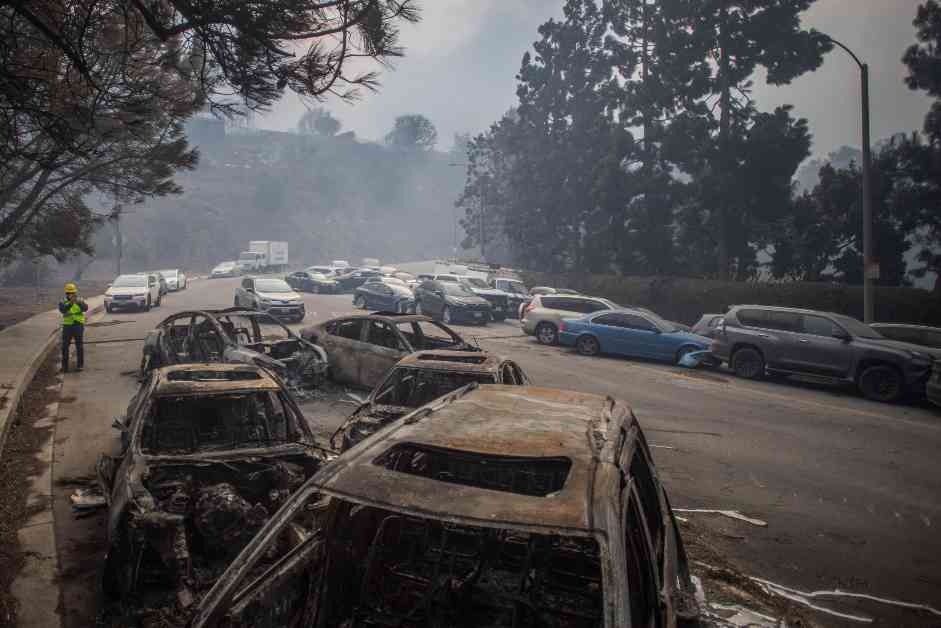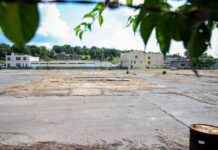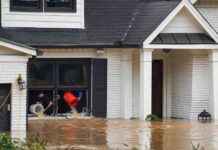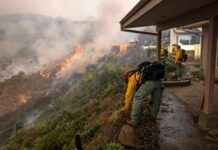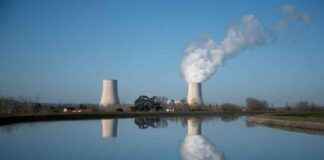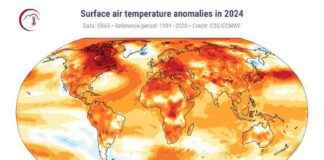Protecting Urban Areas from Wildfires: Crucial Planning for Unprecedented Threats
When Michael Huard took his dog outside on Tuesday in Pasadena, California, a strong gust of wind blew his door wide open.
“It felt like what I imagined at the beginning of a hurricane feels like,” he recounted over the phone on Thursday.
Unprecedented Threats Unleashed:
A blaze dubbed the Eaton fire ignited in the hills above the Altadena area of Los Angeles County on Tuesday. The Palisades fire, the largest and most destructive in Los Angeles history, quickly followed suit. As the infernos raged, fueled by the Santa Ana winds, chaos ensued, leaving at least 10 people dead and over 150,000 residents in the Los Angeles area under evacuation orders.
Fleeing the Flames:
The Palisades fire scorched over 20,000 acres, destroying more than 5,000 structures. Though the blaze’s spread has slowed, containment remains a challenge. The Eaton fire in northern LA County has incinerated over 13,600 acres, with only 3 percent contained. Multiple smaller fires continue to dot the city, causing evacuations to become a logistical nightmare amidst gridlocked streets.
Expert Insights on the Crisis:
Social scientist Erica Kuligowski highlighted her concerns about fires encroaching on urban areas, emphasizing the need for robust evacuation plans. Researchers like Thomas Cova stress the importance of multiple escape routes and fire-tolerant shelters to mitigate the impact of wildfires on densely populated regions.
Inside Scoop from the Frontlines:
Journalist Audrey Gray shared her firsthand experience navigating the LA-area fires, showcasing the challenges faced by residents trying to outsmart the flames. Her personal tale underscores the urgency of preparedness and the emotional toll of fleeing from an impending disaster.
Expect the Unexpected:
As fire seasons intensify with climate change, emergency planners must prepare for worst-case scenarios that challenge existing evacuation strategies. Planning for the unprecedented becomes imperative in a world where wildfires are becoming more frequent and ferocious.
The Road Ahead:
With damages estimated at $150 billion, the aftermath of the Los Angeles wildfires serves as a grim reminder of the urgent need for proactive climate action and resilient community planning. As the world grapples with the escalating climate crisis, the time to act is now to safeguard lives and livelihoods from the ravages of wildfires.
In conclusion, the harrowing accounts of individuals like Michael Huard and Audrey Gray shed light on the human side of the wildfire crisis, underscoring the importance of preparedness, resilience, and community solidarity in the face of unprecedented threats. As we navigate the evolving landscape of climate change, it is crucial to heed the warnings of experts and prioritize collective action to protect our urban areas from the wrath of wildfires.

